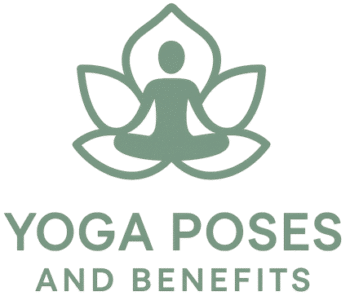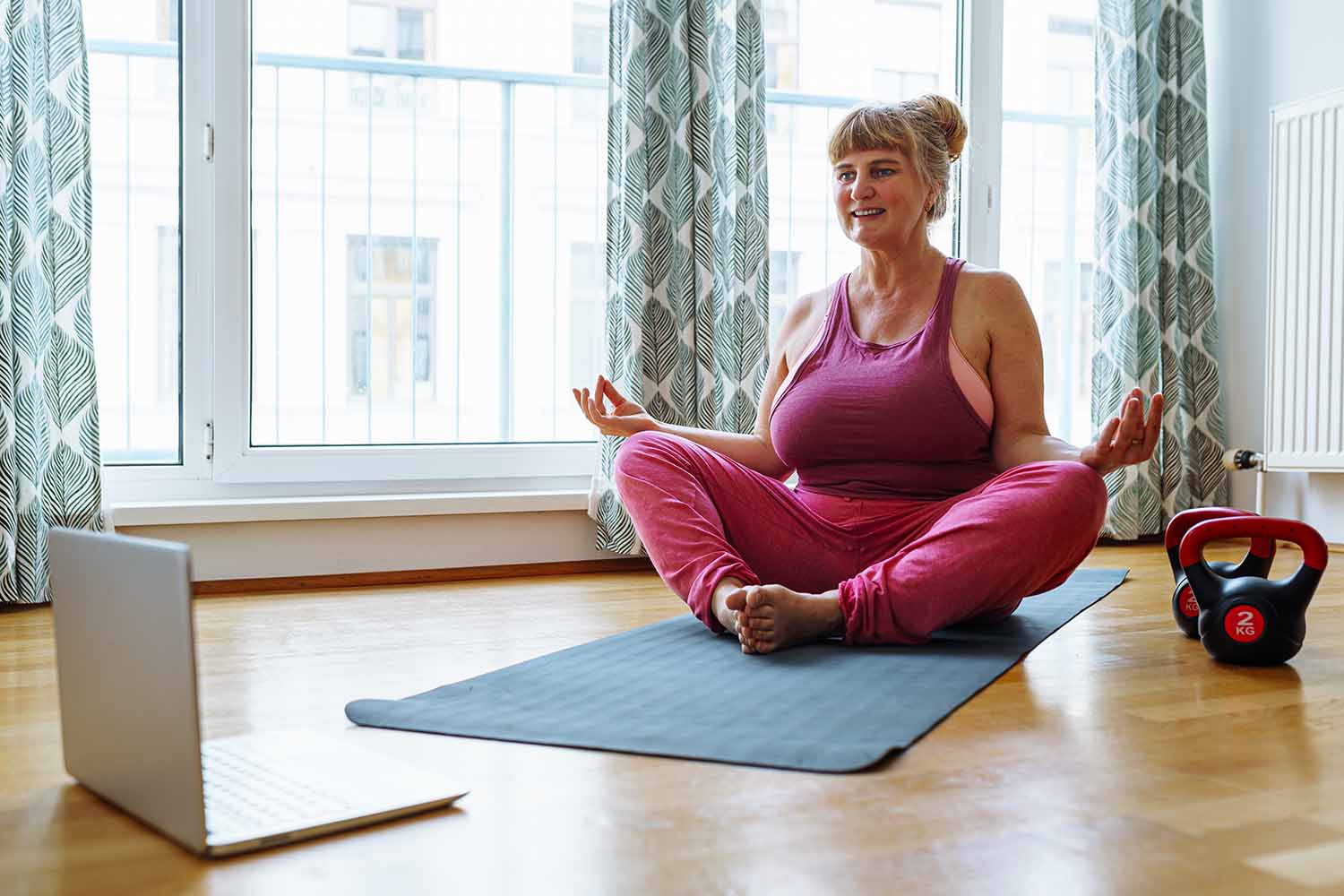Butterfly Pose in yoga, known as Baddha Konasana in Sanskrit, is a yoga asana that signifies grace, inner release, and flexibility. This seated posture symbolizes the unfolding of one’s inner self and encourages practitioners to connect with their breath while stretching their inner thighs and groins. In this comprehensive guide, we will explore the intricacies of Butterfly Pose, from its basic instructions to advanced insights, and understand its role in yoga sequences.
Other Names for Butterfly Yoga Pose
Butterfly Pose is recognized by various names in different yoga traditions and languages. Some common alternate names for Butterfly Pose include:
- Baddha Konasana (Sanskrit)
- Cobbler’s Pose
- Bound Angle Pose
How to do Butterfly Pose in Yoga
Proper alignment is crucial to mastering Butterfly Pose. Here’s a step-by-step guide:
- Begin in a seated position on your mat with your legs extended straight in front of you.
- Bend your knees, drawing your heels in towards your pelvis.
- Allow your knees to fall open to the sides, bringing the soles of your feet together.
- Hold your feet with your hands, interlacing your fingers around your toes.
- Sit up tall with your spine straight, and engage your core.
- Gently flap your knees up and down, like the wings of a butterfly.
- Breathe steadily and hold the pose for 30 seconds to a minute.
- Inhale as you release your feet and extend your legs straight.
Variations of Butterfly Yoga Pose
Butterfly Pose offers variations to accommodate different levels of practice and preferences:
- Extended Butterfly Pose: Instead of flapping your knees, focus on gently pressing your knees toward the mat to deepen the stretch.
- Reclining Butterfly Pose (Supta Baddha Konasana): Lie on your back, bringing the soles of your feet together and allowing your knees to fall open. This variation is suitable for relaxation and meditation.
Modifications for Butterfly Yoga Pose
Butterfly Pose is accessible to most practitioners, but some modifications can enhance comfort or accommodate specific needs:
- Use Props: Place yoga blocks or cushions beneath your knees to support them and reduce strain on the inner thighs.
- Elevate the Hips: Sit on a cushion or folded yoga mat to lift your hips and ease tension in the lower back.
Contraindications for Butterfly Pose in Yoga
While Butterfly Pose is generally safe, there are a few contraindications and precautions to consider:
- Knee or Groin Injuries: Individuals with knee or groin injuries should practice Butterfly Pose with caution and may need to modify or avoid it.
- Recent Hip Surgery: If you’ve had recent hip surgery, consult your healthcare provider before attempting Butterfly Pose.
Tips to Improve Butterfly Pose in Your Practice
- Warm-Up: Begin your practice with gentle hip and groin stretches to prepare your body for Butterfly Pose.
- Mindful Flapping: While flapping your knees, focus on the fluidity and mindfulness of the movement, synchronizing it with your breath.
- Micro-Movements: Use micro-movements to explore different angles and sensations within the pose.
- Breath Awareness: Concentrate on your breath, inhaling to create space and exhaling to deepen the stretch.
What Muscles Does Butterfly Pose Work?
Butterfly Pose engages and stretches various muscle groups in the body:
- Adductors: Stretches and lengthens the inner thigh muscles (adductors).
- Groin: Promotes flexibility in the groin area.
- Hips: Relieves tension in the hip joints and promotes flexibility.
Mental and Emotional Benefits of Butterfly Pose in Yoga
Beyond its physical aspects, Butterfly Pose offers numerous mental and emotional benefits:
- Inner Release: Butterfly pose encourages a sense of inner release and letting go of physical and emotional tension.
- Mindfulness: Butterfly Pose fosters mindfulness and relaxation, making it valuable for stress reduction and introspection.
- Graceful Unfolding: Practicing the pose can help individuals feel more graceful and open to life’s experiences.
Is Butterfly Yoga Pose Suitable for Beginners?
Butterfly Pose is accessible to beginners and provides an excellent introduction to hip-opening postures.
Is Butterfly Yoga Pose Suitable for Advanced Practitioners?
Advanced practitioners can deepen their practice by holding the pose for longer durations, focusing on alignment, and exploring variations, especially in seated meditation or pranayama sequences.
How Does Butterfly Pose Contribute to a Yoga Sequence or Flow?
Butterfly Pose plays a significant role in yoga sequences and flows:
- Hip-Opening Sequence: It serves as a fundamental pose in sequences that focus on opening and releasing tension from the hips and groin.
- Cooling and Calming: The pose can be included in sequences aimed at cooling down and preparing the body for relaxation, meditation, or savasana (corpse pose).
- Meditation and Pranayama: Butterfly Pose is an ideal seat for meditation and pranayama practices, enhancing mindfulness and relaxation.
How Can I Deepen My Practice in Butterfly Pose?
To deepen your practice in Butterfly Pose, consider the following:
- Consistency: Regular practice will gradually improve flexibility and ease in the pose.
- Alignment Focus: Pay close attention to the alignment of your spine and the position of your feet to ensure a safe and effective stretch.
- Breath Awareness: Utilize your breath to guide your movements and deepen your connection to the pose.
Common Mistakes in Teaching Butterfly Yoga Pose
To be an effective yoga teacher, it’s crucial to avoid common teaching mistakes, including:
- Inadequate Warm-Up: Neglecting to include hip and groin stretches at the beginning of the class can make Butterfly Pose uncomfortable for students.
- Neglecting Breath Awareness: Failing to emphasize the importance of synchronized breath and movement can lead to less effective practice.
- Forcing the Knees: Encouraging students to forcefully press their knees toward the mat can lead to discomfort and potential injuries.
- Insufficient Modification Options: Not offering modifications for students who cannot comfortably practice Butterfly Pose can exclude individuals with limited hip flexibility or injuries.
In conclusion, Butterfly Pose (Baddha Konasana) is a yoga asana that signifies grace, inner release, and flexibility. It offers numerous physical, mental, and emotional benefits, making it suitable for practitioners of all levels. Whether you’re a beginner or an advanced practitioner, focusing on alignment, variations, and the mindful aspects of this pose can deepen your experience and enhance its role in your yoga journey. Through grace and inner release, Butterfly Pose empowers you to connect with your breath and your inner self. Namaste.
What is the butterfly pose good for?
The butterfly pose is good for improving hip flexibility, opening the groin, and relieving tension in the lower back. Commonly used in yoga, Pilates, and physical therapy routines, it helps stretch the inner thighs (adductors) and can support better posture and pelvic alignment.
What chakra is the butterfly pose for?
The butterfly pose, also known as Baddha Konasana, primarily activates the sacral chakra, or Svadhisthana. This energy center governs emotions, creativity, and sexuality. Often practiced in yoga and supported by pranayama and meditation, butterfly pose helps release tension in the hips and promotes emotional balance.
Who should not do butterfly pose?
People with severe knee, hip, or lower back injuries should not do butterfly pose, also known as Baddha Konasana. This yoga posture places stress on the groin and inner thighs, making it unsuitable for individuals recovering from surgery or with limited joint mobility. Props like yoga blocks and bolsters may ease strain but don’t replace medical advice.
What emotion is stored in the hips?
The hips are commonly believed to store repressed emotions, particularly stress, fear, and sadness. In somatic practices and yoga, poses like the butterfly pose are used to release emotional tension. Techniques such as somatic experiencing and hip-opening stretches help promote physical and emotional release in this area.
Why do hip openers feel so good?
Hip openers feel good because they release tension in the hip flexors and surrounding muscles, improving circulation and mobility. Poses like butterfly pose, pigeon pose, and frog pose target deep connective tissues, stimulating the parasympathetic nervous system and promoting relaxation throughout the lower back and pelvis.

